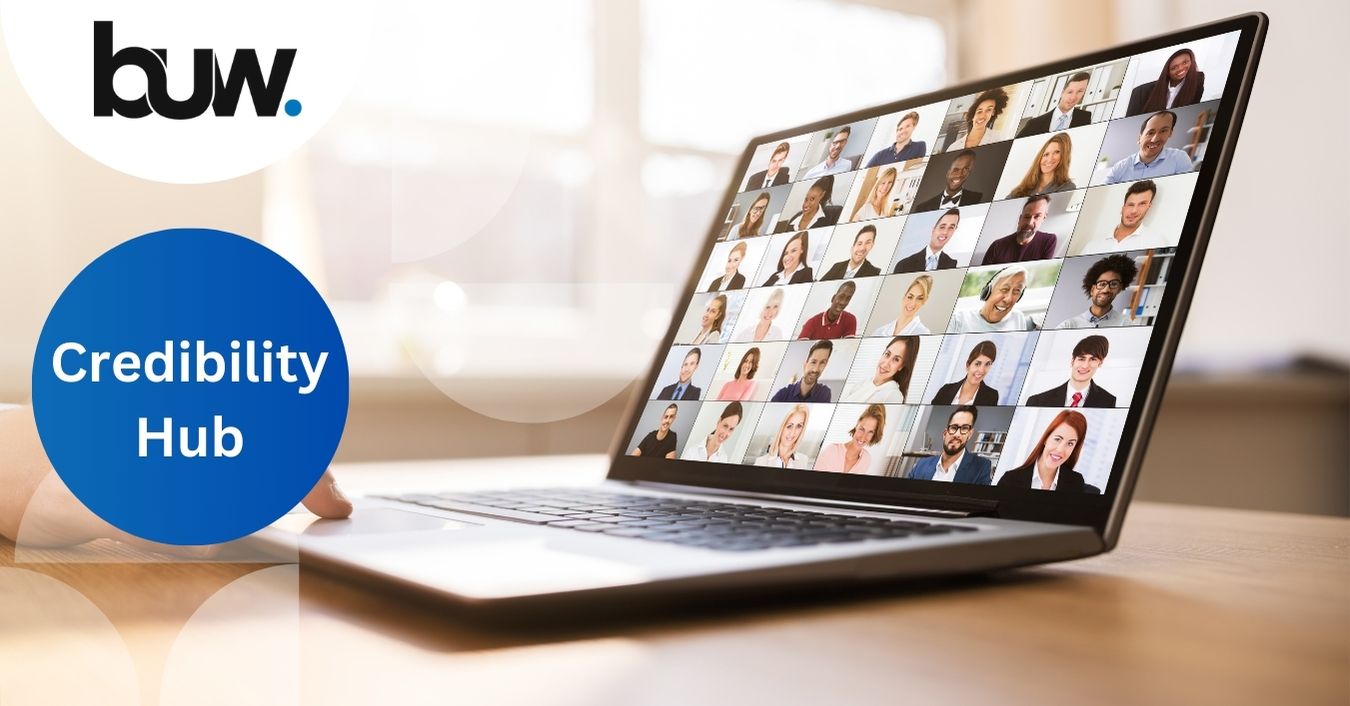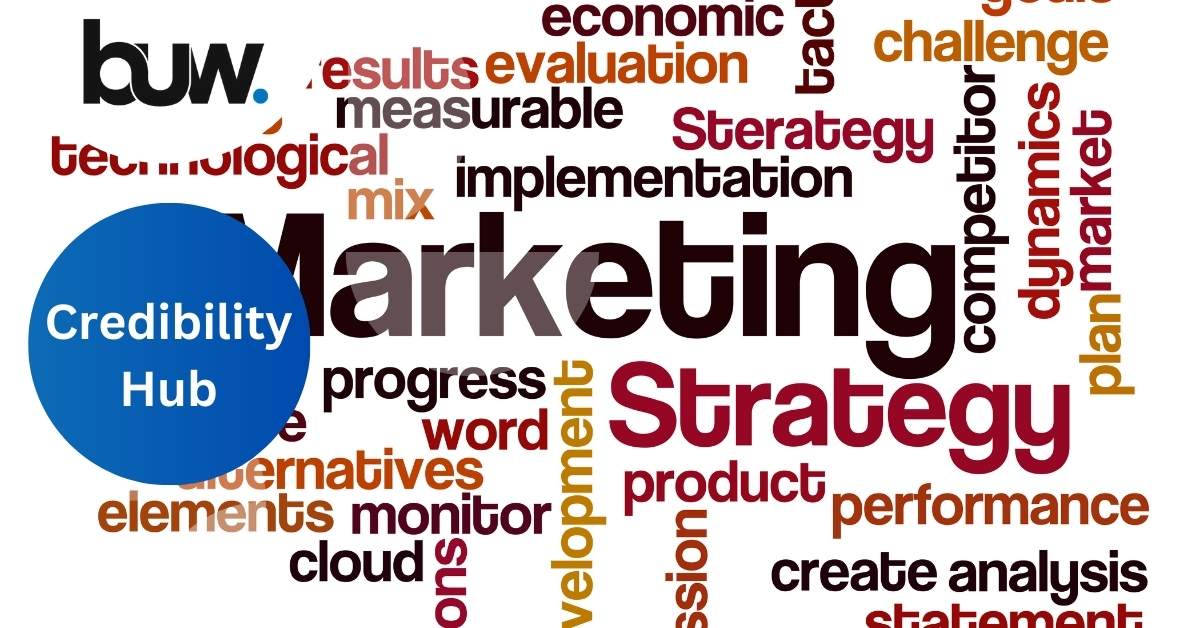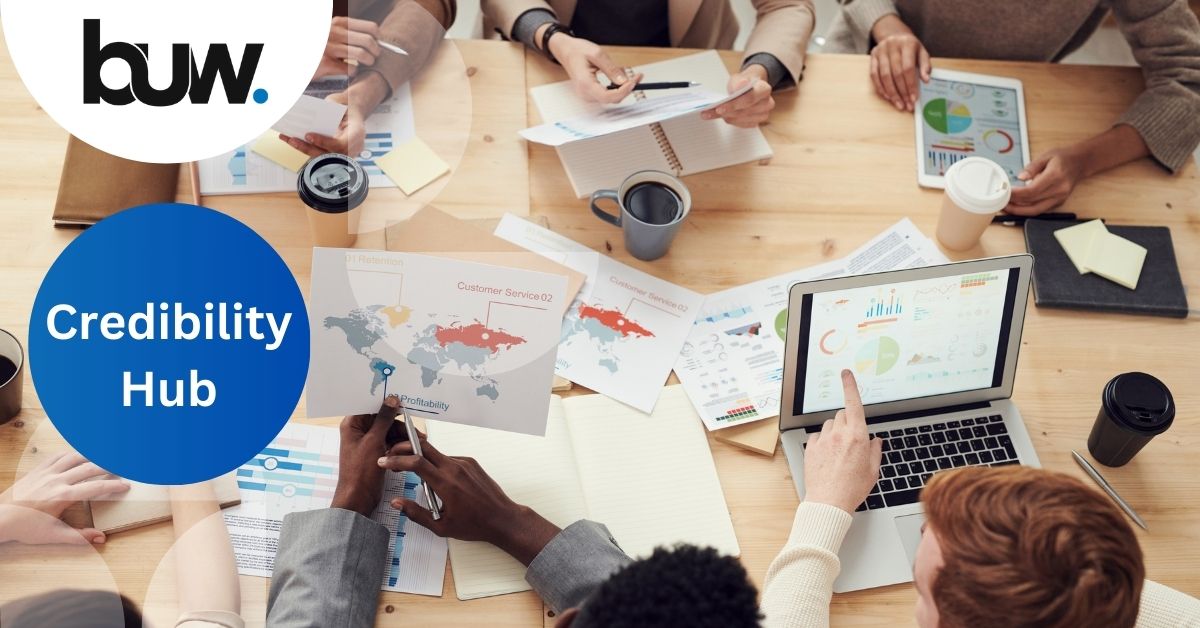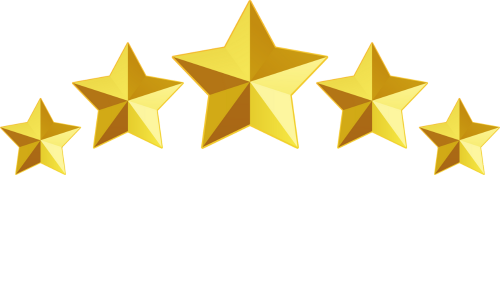If you’re an executive with an interest in modern networking and marketing tactics, you’ve undoubtedly pondered how effective LinkedIn audio events are in comparison to traditional webinars.
Executives around the world are constantly searching for the most effective and significant platforms to connect, engage, and promote their brands in an era where digital innovation is not just a trend but a fundamental shift influencing every aspect of professional networking and marketing.
Finding innovative strategies that appeal to today’s technologically inclined employees has never been more important. LinkedIn, a professional networking powerhouse with about 1 billion members, has entered the arena with the launch of LinkedIn Audio Events.
This new feature stands out as a ground-breaking competitor, going against the accepted conventions established by traditional webinars.
However, how do LinkedIn Audio Events compare to the traditional webinar format?
This blog aims to compare LinkedIn Audio Events and traditional webinars, helping you choose the best platform for networking and marketing in the digital era.
Understanding LinkedIn Audio Events
LinkedIn Audio Events provides a live, audio-only platform for networking and interacting with your professional network, and they launched in 2021. Events can last anywhere from 15 minutes to three hours and involve panel discussions or private conversations with a single speaker.
Here’s a quick rundown of the pros and cons:
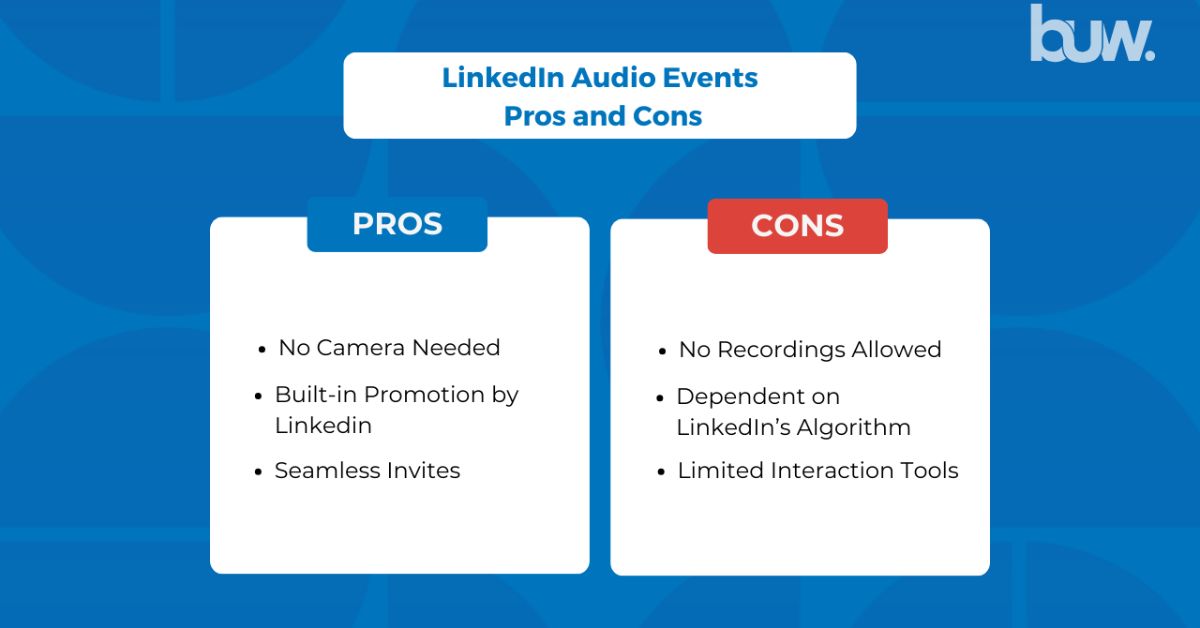
Pros:
1. No Camera Needed
Participants’ convenience is taken care of by LinkedIn Audio Events’ flexibility, which allows them to interact without feeling pressured to be on camera.
For people who might be self-conscious about their looks or surroundings during a video conference, this feature is very intriguing. It is also a more effective use of time because it enables attendees to multitask, such as carrying on with their work or housework.
2. Built-in Promotion by LinkedIn
LinkedIn Audio Events benefits from the integrated promotion mechanisms on the site. Compared to traditional webinar platforms, where hosts frequently have to spend a lot of time and money marketing their events, this is a big advantage.
LinkedIn’s advertising of these events may even be able to enhance visibility among relevant audiences beyond first-degree relationships. Since it takes advantage of the professional context and network effects that come with LinkedIn.
3. Seamless Invites
Getting an audience together is made easier with the option to invite LinkedIn connections directly to participate in an audio event. The invitation process is made more effective and personalised by this feature, which eliminates the need for laborious management of external email lists.
In order to ensure that invitations are issued to people who are most likely to be interested in the event’s content, hosts can more effectively target their audience by enabling invites through a platform where professional relationships have already been established.
Cons:
1. No Recordings Allowed
Since LinkedIn Audio Events are temporary and their sessions cannot be recorded, they offer a special “you had to be there” experience. This policy can significantly enhance one’s impression of attending live, as participants know they won’t have the chance to access the content later.
But it also means that individuals unable to attend in person miss out on any intriguing conversations, networking opportunities, or insights.
2. Dependent on LinkedIn’s Algorithm
The visibility and promotion of LinkedIn Audio Events primarily rely on LinkedIn’s algorithm. This adds a degree of unpredictability but can also be a big benefit as it gives automatic exposure without extra marketing work.
Who sees and attends your events will depend on how the algorithm feels about particular kinds of content. It may also modify its preferences.
3. Limited Interaction Tools
Utilising audio-only events over video webinars or live broadcasts naturally restricts the kinds of engagement and interaction technologies that can be used. It can be more difficult to communicate complex information or keep an audience interested when visual aids like slides, live demonstrations, or interactive polls aren’t used.
Events with audio components can help attendees concentrate on the topic at hand, but they miss out on the benefits that visual elements can offer.
Understanding Traditional Webinars
Traditional webinars have been the preferred platform for online events for many years, and with good reason. They are perfect for in-depth conversations and demonstrations since they provide an organised style with visual components like presentations and screen sharing.
Here’s a quick rundown of the pros and cons:
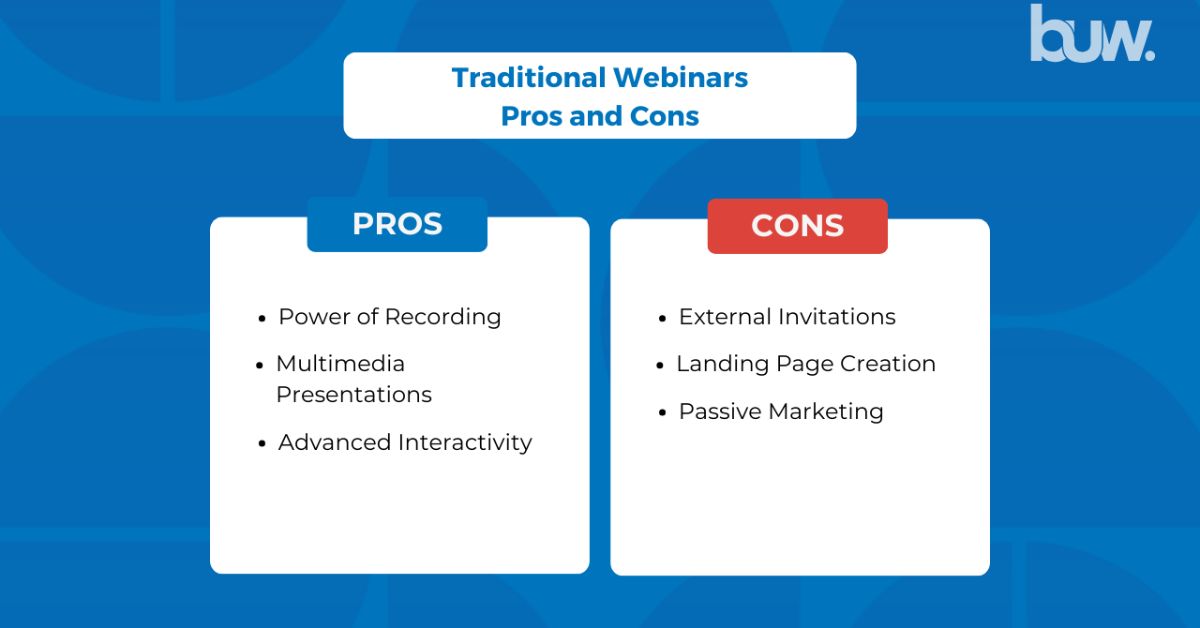
Pros:
1. Power of Recording
One of the most effective ways to extend the life and audience of your content after the live session is to record your events. You can produce an item that can be shared, watched again, and referred to endlessly by capturing every moment.
This offers value to both people who were unable to attend the live event and attendees who want to review the topic again. It creates chances for wider distribution via a variety of platforms, including social media, email newsletters, and your website, which can help you successfully magnify your message and even reach a worldwide audience.
2. Multimedia Presentations
Using multimedia elements in your webinars, such as slides, videos, and live demonstrations, can greatly improve their calibre and audience participation. Presenters may better communicate complicated topics, accommodate varying learning styles, and maintain visual engagement with the audience with the help of these tools.
Videos can bring dynamic information and break up the monotony of a single speaker; slides can give your presentation structure and underline important points; and live demonstrations give you a practical, real-world application of the principles being presented.
3. Advanced Interactivity
The incorporation of effective interactivity features, such as polls, Q&A sessions, and chat features, transforms webinars from a one-way broadcast into a two-way dialogue. With the use of polls, you may instantly get the audience’s thoughts and feedback, involving and elevating them.
Q&A sessions promote active engagement by giving participants the chance to ask questions, learn more about interesting subjects, and express their opinions.
Cons:
1. External Invitations
If you are still in the early phases of developing your online presence, using an email list to invite people to your webinar may pose a serious challenge.
The size and engagement level of your email list have a major impact on how effective this strategy is. This can be intimidating for newbies or those with a small online following, which could limit the audience’s reach and diversity.
2. Landing Page Creation
Developing a distinct landing page for your webinar registration introduces an extra level of complexity to your marketing efforts. All event-related information, such as the topic, date, time, speakers, and registration form, can be found centrally on this page.
The need to create, build, and manage a landing page can be challenging, despite being crucial for gathering participant information and offering comprehensive event details.
3. Passive Marketing
In order to stand out from the competition and draw in participants, webinar advertising is a highly competitive area that demands proactive and creative marketing activities. Passive marketing strategies aren’t going to get much attention if all you do is post a link to the webinar on your website or send out one email blast.
Your target audience is unlikely to find your webinar by accident if you don’t actively promote it. This includes optimising your landing page for search engines, working with influencers or industry partners, sending out email marketing campaigns, and advertising on social media.
Which One is Better?
Here’s a quick cheat sheet to help you decide:
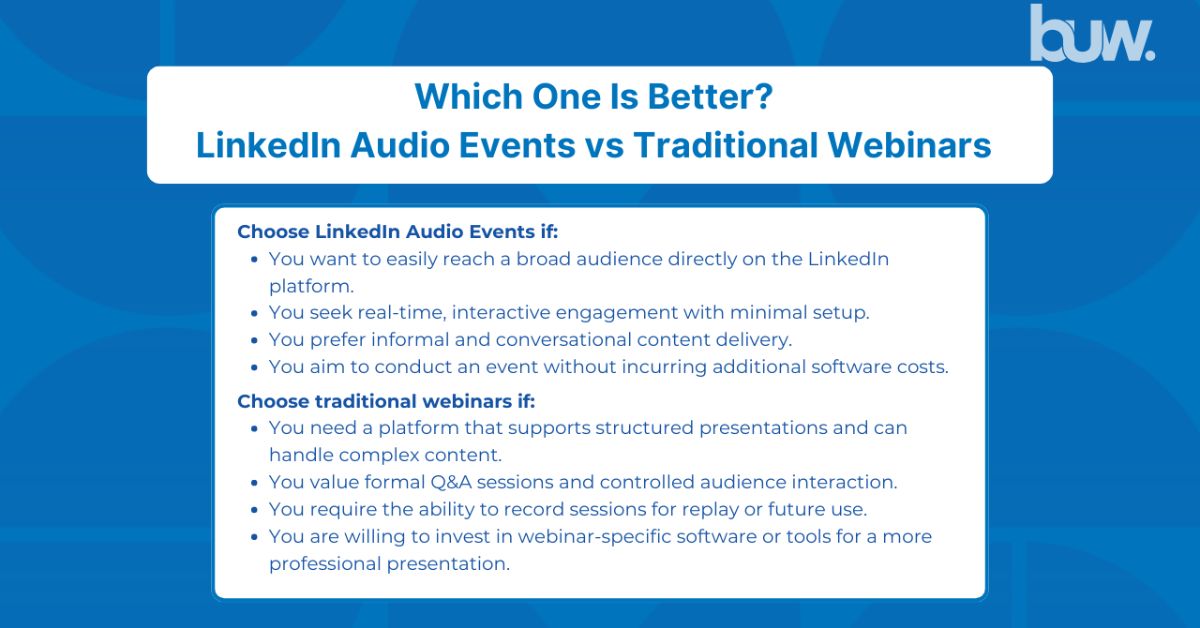
Frequently Asked Questions (FAQs)
Let’s go over some frequently asked questions from executives about LinkedIn audio events and traditional webinars.
While possible, the lack of visual aids might limit the effectiveness of more formal or detailed content.
Using social media to its full potential is essential to increasing the visibility of your webinar; LinkedIn is a particularly useful venue for professional and industry-specific events.
Not necessarily. Since it allows participants to focus only on the information without being distracted by visuals, the emphasis on audio can stimulate more active listening and participation, especially in conversations. This could result in deeper audience engagement and more meaningful exchanges.
Conclusion
We hope that this blog has made it easier for you to comprehend the unique benefits and constraints that separate traditional webinars from LinkedIn Audio Events.
As we get around the specifics of these digital engagement platforms, it’s clear that the choice between the two boils down to your specific goals, audience preferences, and the type of interaction you wish to foster.
Book an appointment now to explore how you can maximise your virtual event success and foster deeper connections with your professional community.
Latha Karthigaa, founder of Brandupwise (BUW) Marketing, is dedicated to improving lead generation for medium to large enterprises. Her strategic insights focus on lead generation, client acquisition, and most important of all educating the businesses and their internal teams about sustainable growth. As a transformative force in the industry, she reshapes the narrative of success for every business under her expert guidance.
Contact
- latha(at)brandupwise(dot)com(dot)au

